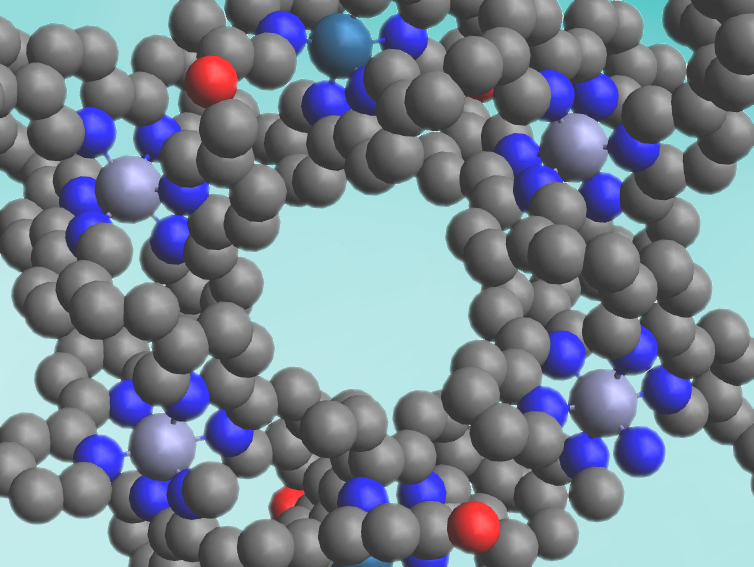Complexes with a circular helical arrangement of metal centers and ligands, or circular helicates, can be useful precursors for molecular knots. Catenanes, for example, are molecular knots in which two or more macrocyclic molecules are mechanically interlocked, or “knotted” together. However, there is a limited number of metals that are known to form circular helicates, and there is a lack of examples that incorporate second- or third-row transition metals.
David A. Leigh, University of Manchester, UK, and colleagues have synthesized a heterometallic Ir2Zn4 hexameric circular helicate and converted it into a star-shaped [2]catenane via ring-closing reactions. The team first prepared an iridium complex with three chain-like bipyridine-type ligands. The chains contain additional free bipyridine coordination sites, as well as terminal olefins. The complex could be prepared in an enantiopure manner by including a chiral resolution step in its synthesis, using L– or D-proline as an amino acid auxiliary.
The iridium complex was then dimerized by adding zinc triflate. The zinc ions coordinate to the free bipyridine sites and connect the two iridium complexes to form a chiral, open circular helicate with two iridium centers, four zinc ions, and six ligand chains. According to the researchers, this is the first example of a third-row transition-metal circular helicate. The helicate was then converted into a star-shaped [2]catenane via a ring-closing olefin metathesis (RCM). The RCM reaction connects the ligands’ terminal olefins, and thus, forms two interlocked macrocyclic rings. The zinc ions can be removed using Li2S and the catenane structure is retained.
- A Chiral Cyclometalated Iridium Star of David [2]Catenane,
David P. August, Javier Jaramillo-Garcia, David A. Leigh, Alberto Valero, Iñigo J. Vitorica-Yrezabal,
J. Am. Chem. Soc. 2021.
https://doi.org/10.1021/jacs.0c12038




